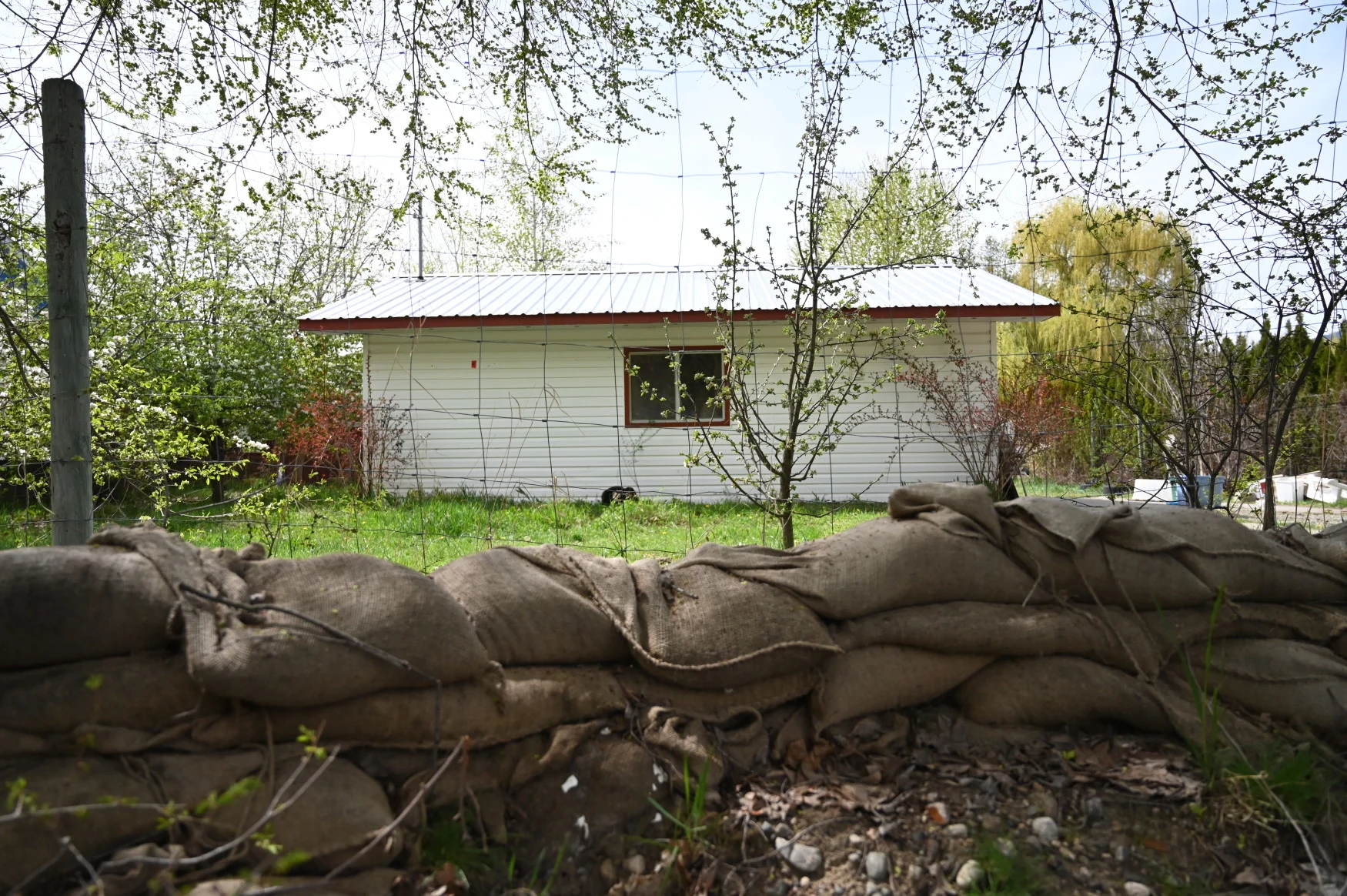
Grand Forks flooding: B.C. community still searching for answers
Record floods destroyed the small town of Grand Forks in 2018, and now the residents have filed a class action lawsuit against the government claiming logging in the region was the cause of the devastating floods.
Walking around Grand Forks, British Columbia you can still see and feel the impacts of the devastating 2018 floods. In North Ruckle, there is an eerie feeling that you have just stepped foot into a ghost town as windows and doors are boarded up, the grass is overgrown, and weeds are taller than fences.
In 2018 the City of Grand Forks was devastated by record floods after two days of intense rainfall. Between May 8–11, around 50 mm of rain fell in just 24 hours. In Grand Forks specifically, Boundary rivers surpassed the highest levels they had seen since 1948 and ripped through homes and downtown businesses. More than 2,800 residents in Grand Forks and Osoyoos were displaced and there were 23 states of local emergency.
“I was out here at one in the morning and I was in thigh-high water and it was freezing and I was trying to get the pumps running, and they just weren’t working and then the water reached the sandbags,” said Jennifer Houghton, a Grand Forks resident, who shared with The Weather Network her memory of the events.
“I think initially people were in a state of shock,” said Houghton. “That sense of trauma builds over time. I was waking up every morning with the feeling of hands around my neck.”

Jennifer Houghton outside her home. (Mia Gordon)
Four hundred homes and one hundred small businesses were destroyed. The total cost of the damages was around $38 million, according to an assessment report done by the British Columbia Economic Development Association. Aside from financial impacts, the flood also took a mental toll on residents.
According to the Red Cross Emergency Management Program, about 300 people reached out for mental health support. Many of the impacted homes were expropriated by the city to improve flood infrastructure, and many residents that had called this area home their entire lives were forced to pick up and leave.
On paper, what happened in Grand Forks seemed to be the perfect storm. By March 1 of that year, the Boundary region received 136 per cent of normal snowfall. Then came the extreme heat that caused rapid snow melt, and that was followed by heavy rain events.
“We know the rainfall intensity was more than 50 mm of rain in the period of 24 hours,” Dr. John Innes, Dean of the University of British Columbia’s Faculty of Forestry, told The Weather Network.
Fast forward to 2021, when another deadly storm devastated B.C.’s Interior and Fraser Valley in November. An intense atmospheric river dumped record amounts of rain on the province, washing away stretches of highway, flooding towns like Merritt and Abbotsford, and cutting Vancouver off from the rest of the country. Again, the unfortunate collision of natural events were only part of the story in both scenarios. While the impacts and cleanup are still ongoing, some are blaming the way humans have changed the landscape for exacerbating the flooding.
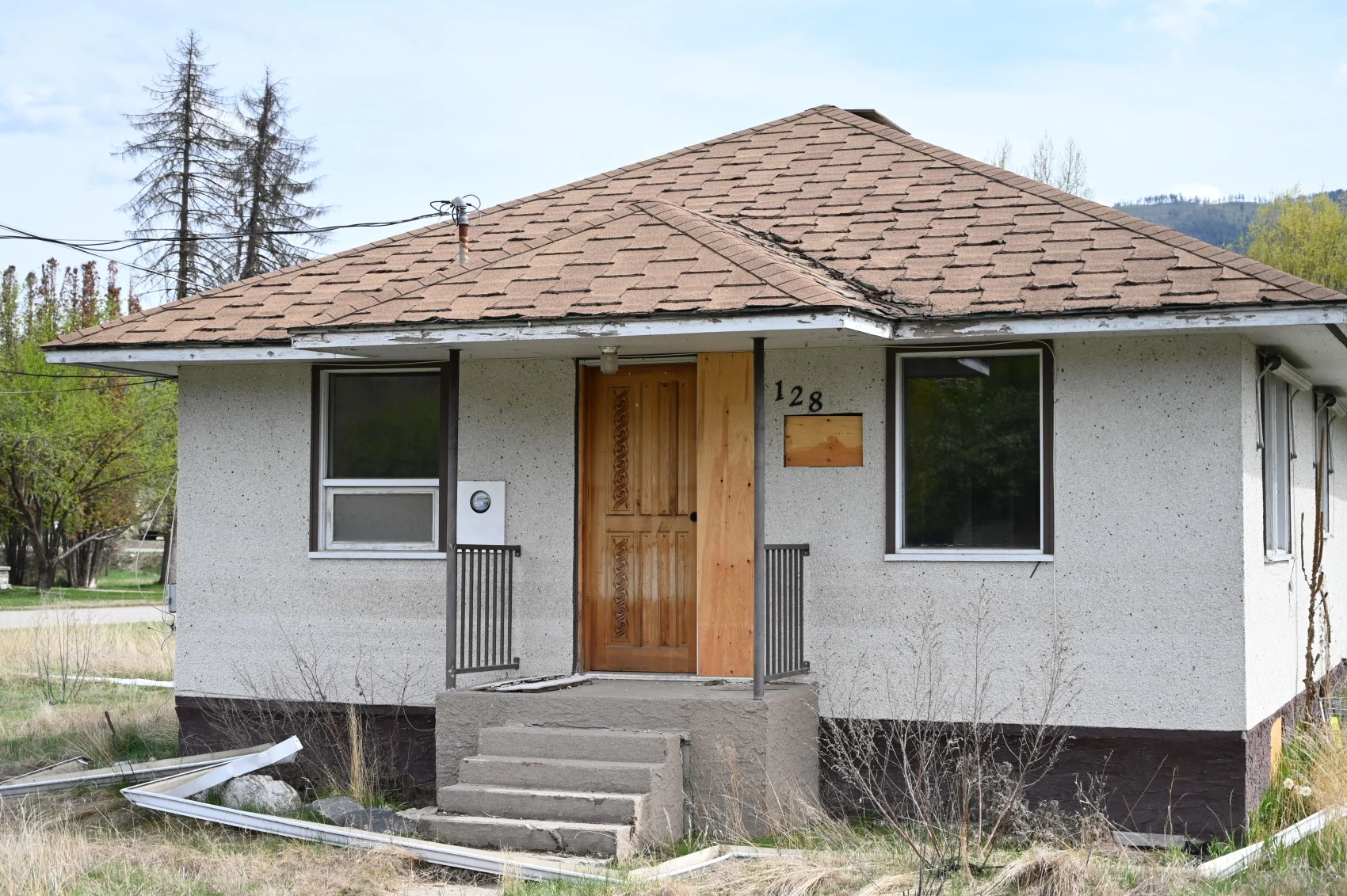
A boarded up house in North Ruckle, Grand Forks, B.C. (Mia Gordon)
In the case of Grand Forks flooding in 2018 a connection between clearcutting and flooding has been made. As a result, residents have even filed a class action lawsuit against the province and the logging companies that operated in the area.
Now, both residents and the provincial government are paying closer attention to the impact that clearcutting can have.
THE CLASS ACTION LAWSUIT
As soon as the flooding started, Houghton decided to grab a camera and document what was happening. In a video provided to The Weather Network you can see homes drowning in water, sides of river banks washed away, roads completely underwater, and residents rushing to put down sandbags.
“In the process of filming the documentary for the flood I thought: Well, I better find out the cause of it because there hadn't been anything like that here before except back in the 1940s when an old dam busted,” Houghton explained.
“So why did this happen? It happened in 2017, it got worse in 2018, and so someone directed me to talk to a forest ecologist Herb Hammond and he showed me overhead pictures of aerial photos of our watershed in the mountains, and the patch work of clearcuts that were up there.”
Houghton started doing some more research on the area, and through her findings she believed the provincial government overestimated the amount of timber that could be sustainably cut from the area by 20 per cent over a 20-year period.
With this information, Houghton, along with some of her neighbours who were also impacted by the floods, filed a class action lawsuit against the provincial government and several logging companies claiming that without sufficient regrowth and watershed recovery, there was an increased runoff in streamflows, and that is what caused the intense flooding.
Some key allegations in the lawsuit claim that one company in particular, Interfor, had unsustainably clearcut tens of thousands of hectares of land during the last several decades in the Kettle River basin. The lawsuit also alleges that the vast majority of the clearcuts from 2014 to 2017 were on land higher up where snowback is deeper and becomes a greater source for water. Without the trees, more snow accumulated on the ground and without trees for shade when the warmer weather came, the snow melted faster.
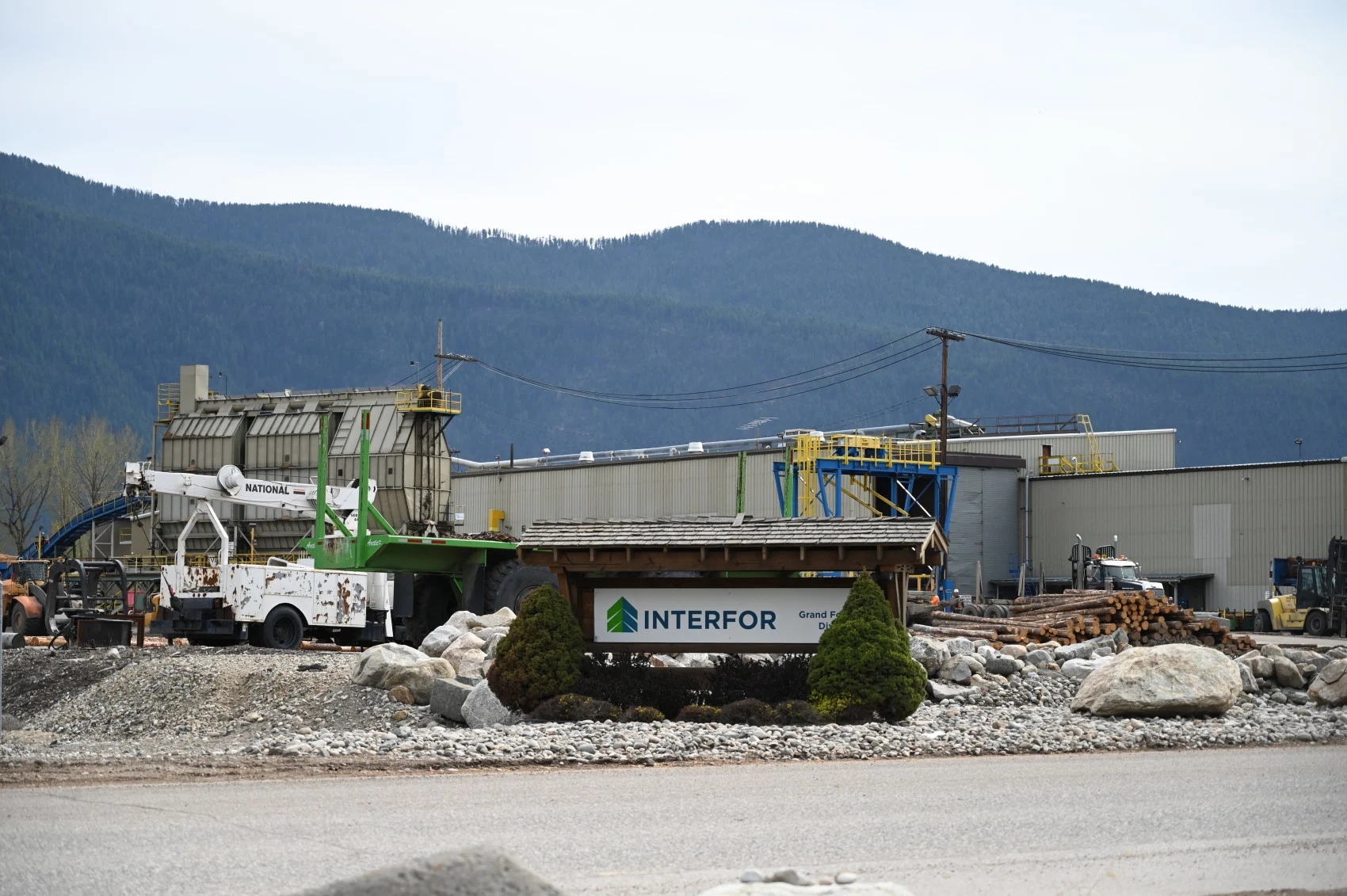
Interfor's saw mill in Grand Forks, B.C. (Mia Gordon)
When The Weather Network reached out to the provincial government about the lawsuit, a ministry spokesperson responded via email saying: “As this matter is before the courts, we are unable to provide any comment.”
The Weather Network also reached out to Interfor, one of the logging companies at the center of the lawsuit. Larry Price, the VP of Interior Operations at Interfor responded saying:
“The history of flooding in this region is well known, and even featured on a display in the Grand Forks Courthouse. In 2018 we saw a confluence of factors that led to a particularly severe flood event, specifically an extremely heavy snow pack at 230 per cent of normal, and a later than normal spring starting with a spell of hot weather and heavy rains.”
When responding in particular to the lawsuit, Mr. Price went on to say, “We won’t comment on pending litigation except to say that we are proud of our leadership in sustainable forest management and that our activities adhere to the highest industry standards and are always in line with government regulations.”
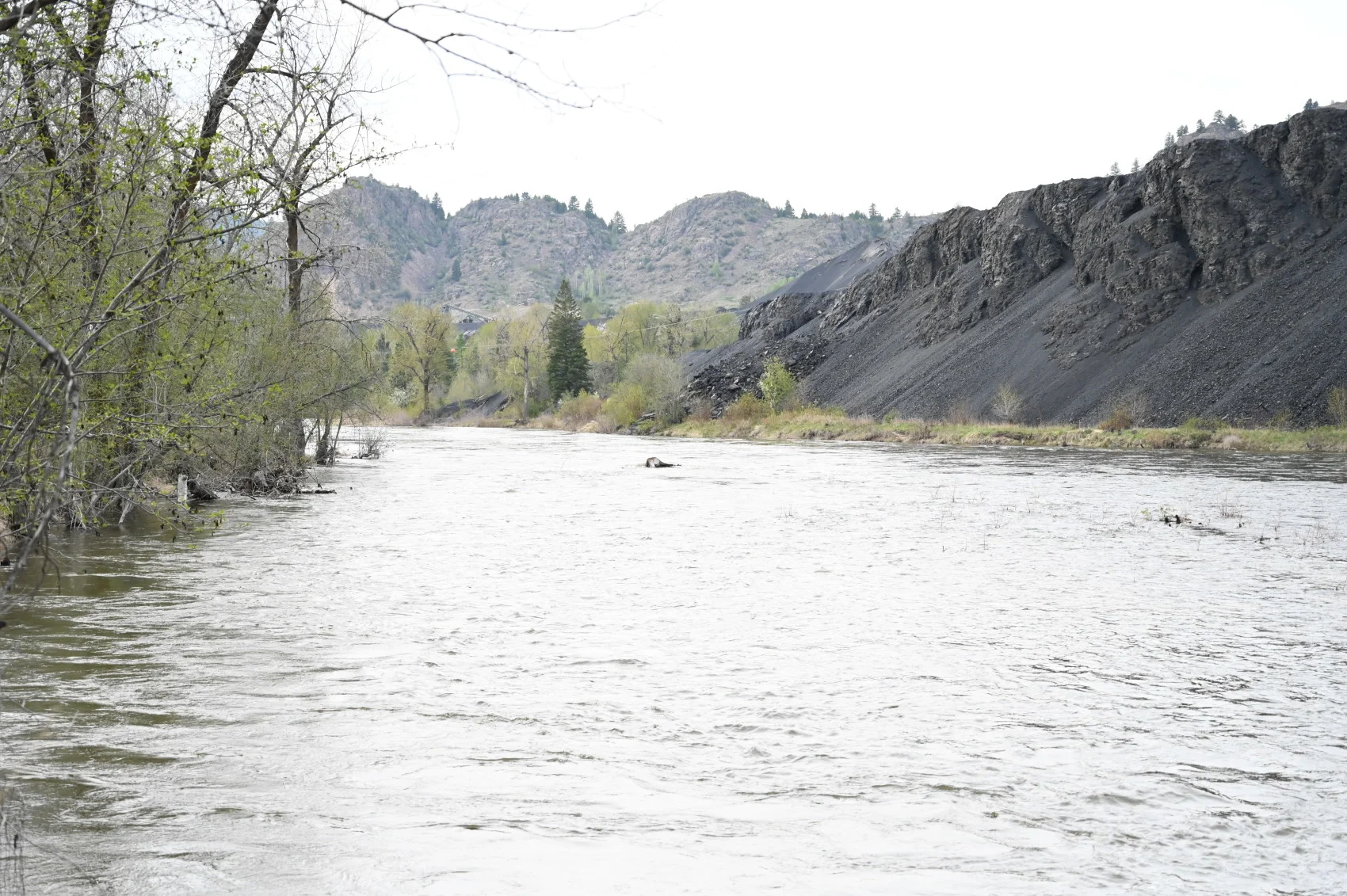
The Kettle River in Grand Forks, B.C. (Mia Gordon)
STUDYING THE ISSUE
In the wake of the flooding and the lawsuit, much more has been written on the connection between clearcut logging and flooding. One such researcher is UBC Faculty of Forestry Dean, Dr. John Innes, who told The Weather Network that there was a possible correlation between the flooding and logging.
“We have known about that for quite a long time, over 100 years in fact since some work was done in Switzerland showing there is a relationship,” he said. “The relationship is related to the amount of snow cover, so in the areas where there is no snow you don’t see this. But in the areas where there is snow and you remove the forests, then we find an increase in the size and frequency of floods.”
As for Grand Forks in particular, Innes said that because of the clearcuts, the size of the flood may indeed have been increased. “It really depends on where the clearcuts were, where the most intense rainfall occurred, and where and when the water got to the rivers,” he explained.

Stacked logs at a saw mill in Grand Forks, B.C. (Mia Gordon)
Another study from 2012 suggests cutting down forests in snowy regions doubles the number of large floods that occur in nearby rivers and streams. The study took a look at areas like Camp Creek, Redfish Creek, and 240 Creek and concluded that harvesting in the areas increased the magnitude of peak flows over a wide range of event size.
Nearly a decade later, an independent report from the Sierra Club BC studied the relationship between forest management and severe climate impacts, and concluded that over logging negatively impacts climate related disasters like droughts, fires, heatwaves, and floods.
Dr. Innes echoed these sentiments, saying: “The weather is getting more unpredictable as a result of climate change and that is making forecasting very, very difficult. We tend to use a series of different measures like recurrence intervals for example, where we would say a major flood occurs between once every 50 years to 100 years. Well they are happening more frequently now.”
FROM IMPACT TO ADVOCACY
Back in Grand Forks, while Houghton awaits the results of the class action lawsuit, she helped form the Boundary Forest Watershed Stewardship Society.
“We are working to advocate for ecologically, economically, and socially sustainable practices in our watershed,” she said, highlighting the fact that the group recently wrote a 170-page report on how to manage forests for ecological integrity.
“Instead of going into the forest and looking at how much fibre we can extract, we decide first where not to log,” she explained. “So we put aside wildlife corridors and wildlife habitat areas, we put aside human use areas. Once all of those ecologically important areas have been determined, then we decide where we are going to log. And when we do log those areas we use something called selection logging, which is very different from clearcut logging. Instead of going in and taking the best trees and eliminating everything above ground, with selective logging we determine how we are going to maintain ecological value of the forest while cutting down fewer trees.”
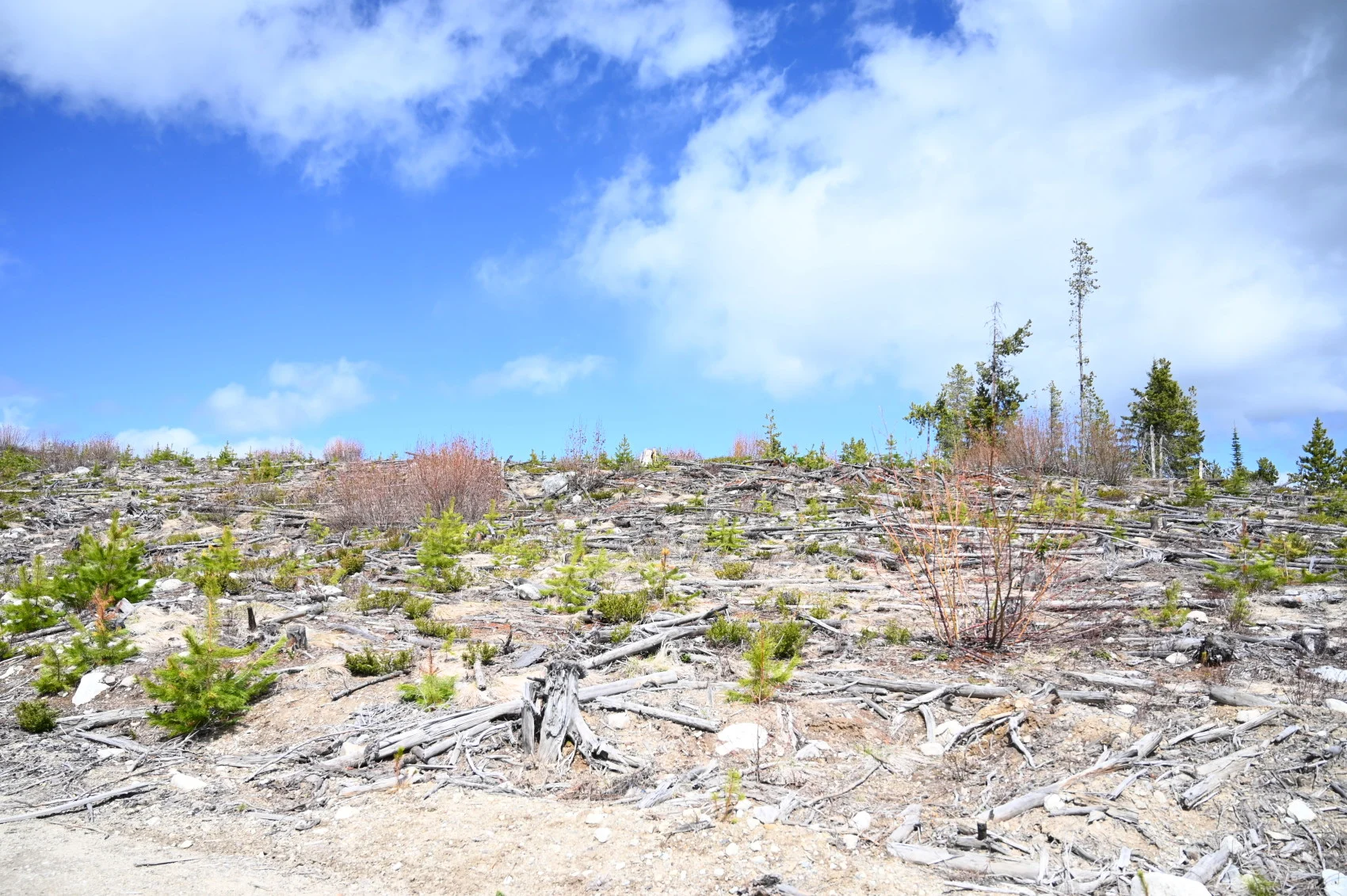
An area of clearcuts in Peachland, B.C. (Mia Gordon)
Houghton makes it sound like a win-win situation, but is it actually possible to find a healthy balance between the ecology and economy of the forest?
“I spend most of my research looking at the balance between ecological, the economic, and the cultural aspects of forestry,” said Dr. Innes. “I think that we can do better in British Columbia than we have currently been doing. We put too much emphasis on the economic aspects. It is important and it is really important to provide jobs. But we can also provide jobs with a more ecologically balanced approach to forestry. We need to pay more attention to the science we have got. We know about snow and forestry, we know about flood and forestry. We have a lot of knowledge we could be applying, and we don’t always do that.”
B.C. GOVERNMENT’S NEXT STEPS
For their part, the B.C. government stated they have a vision for a forest sector that balances economy with ecology.
In an email to The Weather Network, a spokesperson wrote: “It will mean updating forest policy and legislation to secure a sustainable future for forest communities, Indigenous peoples, forest workers, their families, and forest companies. We have taken action by protecting nearly 200,000 hectares of old growth in nine areas throughout the province but we know there is a lot more work to do. That’s why the government commissioned an independent panel to advise us on how we could do better when it comes to protecting forests.”
According to the government, the five-member panel is taking a science based approach to advise the province on management of old-growth forests and to date have come up with 14 different management recommendations.
More recently, British Columbia’s forests minister introduced a bill to amend the Forest and Range Practices Act.
In a recent press conference, B.C.’s Minister of Forests, Lands, Natural Resource Operations, and Rural Development, Katrine Conroy stated the province plans to “reshape” forest management, with the main goal being to create a forest sector that delivers higher value for the forest while balancing long-term jobs and a healthier ecosystem.
The government announced a new system of 10-year forest landscape plans, that they are working alongside First Nations and local communities that will prioritize forest health, requiring companies with harvesting licenses to develop and submit their operational plans for the ministry’s approval. These changes are expected to come into effect over the next year.
The issue with clearcut and old-growth logging has also been recognized on a global scale. At the recent COP26 event, more than 100 world leaders representing over 85 per cent of the world’s forests committed to halt and reverse deforestation and land degradation by 2030. Canada was included on that list as well as Russia, Norway, and Brazil. They also announced a commitment of $12 billion US in public funds from 12 countries from 2021–2025 to protect and restore forests.
As for Houghton, she hoped that sharing her story will inspire others to use their voices.
“People are starting to realize that a change needs to be made. We don’t have any more time. It is not just the flooding and the impacts on people, like financial impacts. It is about our future. There is so much at stake. Biodiversity is so important. That slogan, ‘worth more standing’ has so much meaning to it. It is about our future. Old growth and mature growth, it is what sustains us. We all have to come together and continue to work on creating the political will so that the system gets changed at all levels of government.”
Thumbnail credit: Mia Gordon












